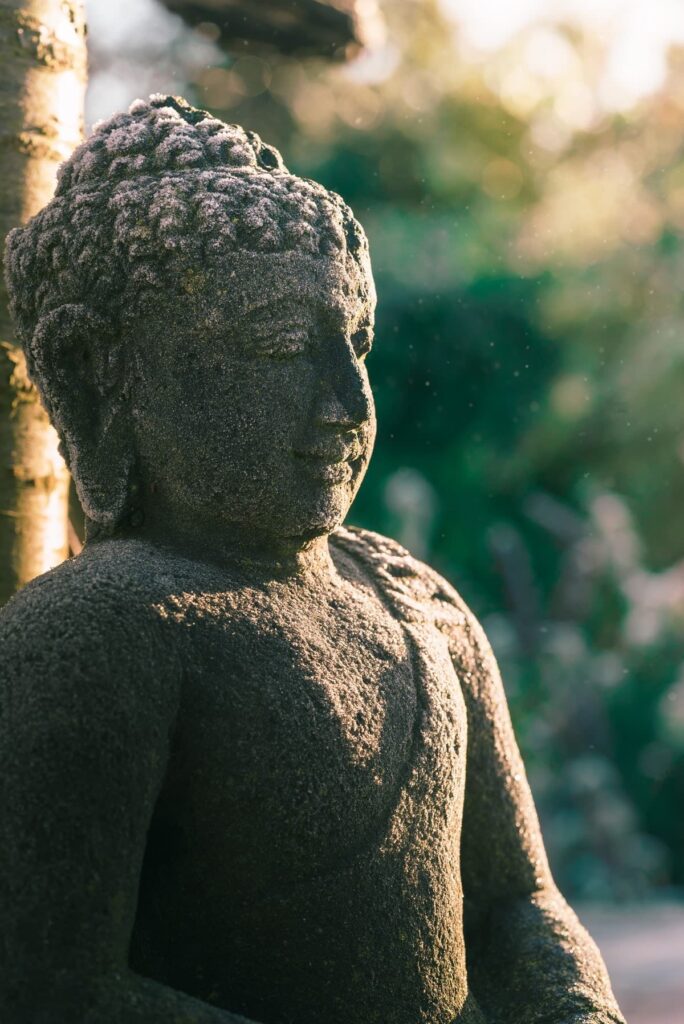The practice of the Four Immeasurable Qualities—Equanimity, Loving-Kindness, Compassion, and Sympathetic Joy— is common to all Buddhist traditions of practice. For our great tradition of Mahayana, they are the foundation for bringing forth all the sublime qualities of Bodhicitta, the heart and mind of Enlightenment. In previous blogs, we looked at uncovering our boundless equanimity, immeasurable loving-kindness and immeasurable compassion. Now let’s turn our attention towards the next: immeasurable sympathetic joy.
With immeasurable loving-kindness and compassion, we had a purpose or goal: For myself and all beings to have happiness and its causes and freedom from suffering and its causes. Having such a noble purpose can be an enormous source of inspiration, but it can also lead to ambition and disappointment. We can easily get waylaid by our hope to achieve and the usual associated fears.
The View of Sympathetic Joy
The view of sympathetic joy is very straight-forward and easy to understand: we take joy in the well-being and positive achievements of others and we celebrate the cultivation of virtue. It’s a wonderful practice because not only do we get to enjoy and appreciate our life, but we can derive the same joy through empathetic rejoicing at the good fortune of everyone else as well. It’s all good! This practice offers a balance to the goal orientation of Karuna and Metta, since sympathetic joy has nothing to do with achieving something.

Perhaps the best part of Immeasurable Sympathetic Joy is that it’s an antidote to the self-destructive habit of covetousness and jealousy. Instead of feeling envy, when another person attains fortunate circumstances, we join them by enjoying and celebrating the positive conditions as if they were our own. What’s great about this practice is we just get to feel more and more joyful. So many good things happen every day, and now the good fortune of others is also ours.
Relax Comparing: Getting out of the Comparison trap
To begin to cultivate immeasurable joy, we have to build it on a foundation of inner contentment. We often don’t know how to simply enjoy the fruits of samsara, the good times that do arise. Far too often in the midst of a perfect day, haven’t you heard yourself saying something like: “Too bad everyday can’t be like this!” I have been teaching about Radically Happy all over the world, and I never met a single person who didn’t say this at one time or another. The biggest stealer of contentment is our habit of constantly comparing what is going on to either someone else’s circumstances or our idealized version of what life should be like.

In Radically Happy, Phakchok Rinpoche and I chose to include a very simple, yet powerful practice to help us escape the comparison trap.
Happy With Who I Am And What I Have
It’s best if you can do this exercise at the beginning of the day. You can make it part of your normal meditation practice.
Begin the practice by sitting in an upright comfortable position.
Start by creating space for a few minutes.
As you breathe in, think, “I am happy with who I am.”
As you exhale, think, “I am happy with what I have.”
Repeat this breathing exercise at least twenty-one times. Then, start your normal meditation practice.
At the end, make prayers of aspiration according to your tradition of practice.
Begin each day by recalling a reason to appreciate something about your life, such as a quality of yours that you like or a possession that you appreciate. Don’t think that anything is too insignificant to appreciate. Even simple things like “I really enjoy the first coffee of the day” or “I love my new hoodie” are a good way to do this exercise. It is also good to think of something about ourselves that we are satisfied with.
from Radically Happy: A User’s Guide to the Mind
Expanding Sympathetic Joy
This is similar to the practices of Metta and Karuna, in that you start by bringing someone to mind who you feel very close to and then widen your field of joy.
We can begin by doing equanimity practice for a while, then the Happy With Who I Am/What I Have practice just explained above.
Then think of someone close to you who has had wonderful news or a favorable change of circumstances. Imagine how joyful they must feel, and then inspire yourself to feel the same sort of joy.
Gradually expand your field of joy to include more and more people.
Make prayers of aspiration according to your tradition.
As you go through your day, anytime you hear of something wonderful happening to someone else, rejoice! This is such an easy to do and enjoyable practice.
Rejoicing in Virtue
Rejoicing in virtue is really the root of a uniquely profound joy. Again there’s nothing to achieve, you engage in it and its benefit is immediate—you feel joy. Of course, we can be very joyful when we hear of the accomplishments of sublime beings, or even just the regular practice of the ordained Sangha. But in our tradition it is not just appropriate, but an essential part of the practice to rejoice in our own virtue as well.
Celebrating our Practice
Whenever we practice, we should always take a moment to celebrate. Even if our meditation was very distracted or had other defects, we made an effort—it’s why it’s called practice and not Buddhahood. Or perhaps we went out of our way to be responsive to the needs of others; that is also a cause to celebrate. The very act of celebrating is an inspiration for doing more practice. We’ve all had the experience of coming to end of our practice session and thinking that we didn’t do it right or it wasn’t good enough. Ask yourself which way of ending your practice will lead to a positive result: Engaging in self-denigration or enjoying the attempt? We need to build a healthy positive momentum around our practice, that way it becomes easier and easier to practice and to make progress.

But there is a catch. If we end our sessions by thinking: “how great I am that I practiced, I am such a fantastic person, I am obviously blessed by Buddha!” that won’t be helpful at all. That’s just reifying the main obstacle to practice—an unhealthy preoccupation with ourselves. It’s ignoring the truth of interconnectedness, our teacher who gave the instructions, the great yogis and scholars of the past who kept this wisdom tradition alive, our dharma friends who support us in our attempts to study and practice.

So, how should we enjoy our virtue without slipping into arrogance? A good analogy is the way you would enjoy a meal when you are really famished. Imagine a day where you were so busy you hopped out of bed and after running through the shower realized you were late for an important meeting. So you left the house without any breakfast. You entire day was so full-on, that you didn’t get lunch either. You are so tired and hungry at the end of day, that you stop at your favorite restaurant and order you favorite dish. The food comes and you eat it, it’s so delicious. You don’t think, “I am so special because I got to eat this meal” or “I am so wise to stop in at this restaurant”. You are just immersed in eating and enjoy how delicious the food is. It is really uncomplicated. That is how we should enjoy and celebrate our practice.
Dedicating the Merit
We have a special term for celebrating our practice and a formal way to do it. It’s called “Dedicating the Merit,” and so we say special prayers of aspiration at the end of our session. What is meant by merit? Merit means something that will bring us happiness. So engaging in good deeds, cuts off rebirth in the lower realms. Engaging in authentic practice, creates the auspicious circumstances for uncovering our own Buddha nature. It certainly is worth celebrating!
Therefore, at the end of the session, don’t just robotically read the dedication prayers, do it with great joy. And since we are practicing Immeasurable Sympathetic Joy, dedicate and enjoy all the merit that anyone has ever accumulated, and will ever accumulate. Our practice, whether it is sitting meditation, deity yoga, or contemplating the qualities of the dharma or any of the other practices we might engage in, is always based on a foundation of Immeasurable Equanimity. As we dedicate we are wishing all beings to be happy and have the causes of happiness (Immeasurable Loving-Kindness), and to be free of suffering and its causes (Immeasurable Compassion) and we celebrate all the effort that has been made and will ever be made to bring this about (Immeasurable Sympathetic Joy).
As we come to the end of the series of blogs on the Four Immeasurable Qualities, I’d like to ask you to join me in contemplating this prayer of aspiration by the sublime Nargajuna, approaching it with as much joy as possible:
O Precious Sublime Bodhicitta,
May it arise where it has not arisen,
Where it has arisen, may it never decline,
But go on increasing further and further!
Further Study
The Relying on the Four Immeasurable Qualities During a Pandemic Series:
Part 1: Immeasurable Equanimity
Part 2: Immeasurable Loving-Kindness
Part 3: Immeasurable Compassion
And for another view of the topic, read FOMO Got You Down? Try Sympathetic Joy.










Responses